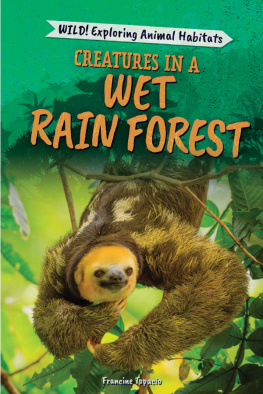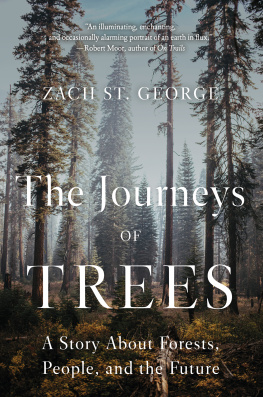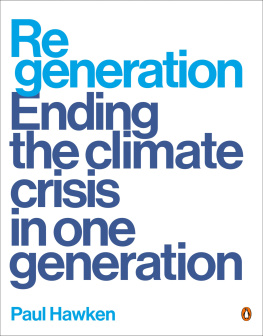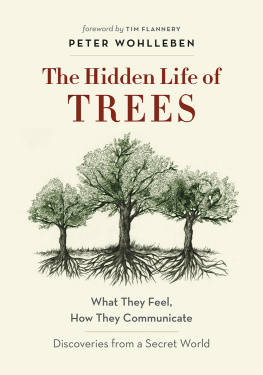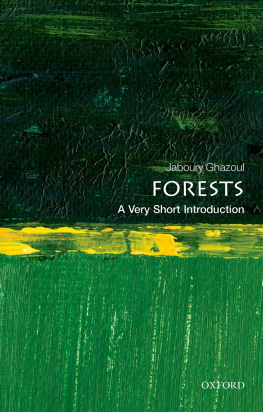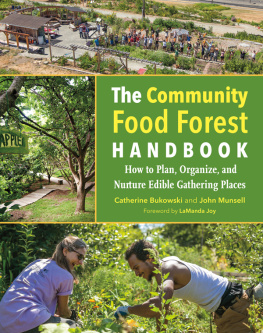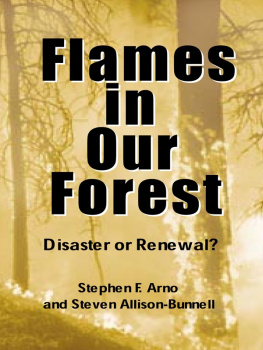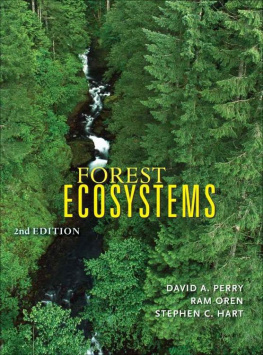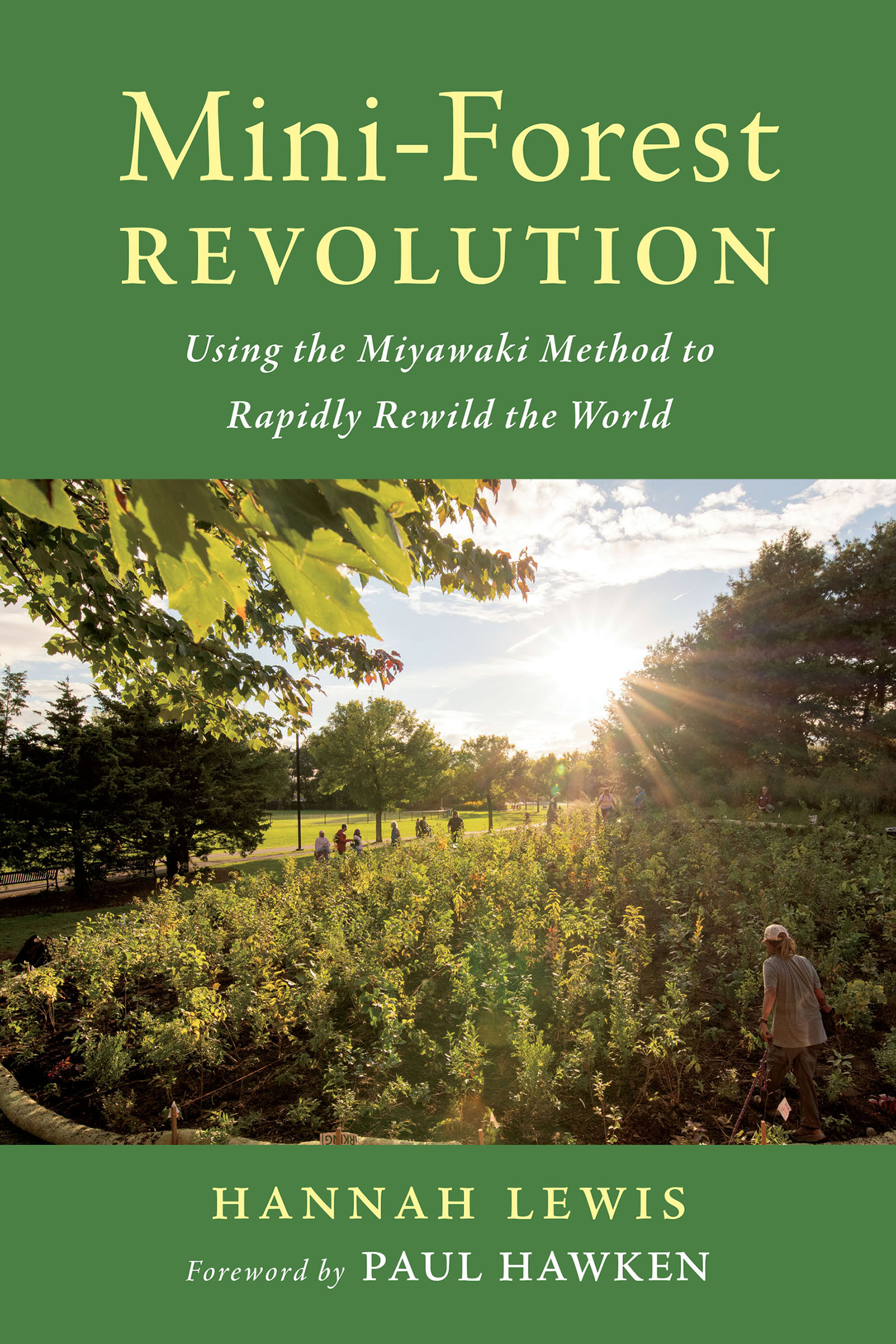Contents
List of Tables
Guide
Pagebreaks of the print version
PRAISE FORMINI-FOREST REVOLUTION
My late friend and colleague, Professor Akira Miyawaki, wanted nothing more than to repair the forests of the world. He wanted trees in the ground, as do I. This book would make him happy.
DIANA BERESFORD-KROEGER,
author of To Speak for the Trees
We cannot solve problems by succumbing to fear and anger, and yet so much of the climate conversation is powered by the fearful narrative of a dying planet. In Mini-Forest Revolution, Hannah Lewis offers a different storyone that is authentic, honest, and powered by love. Her writing provides the inspiration, motivation, and recipe for working with nature rather than against it; for gathering our courage and creating the world we imagine.
SHUBHENDU SHARMA,
founder and director of Afforestt
Imagine a world where every modest scrap of worn-out dirt or asphaltthink tennis-court-sizecan become a cooling, moisture-circulating, air-cleansing, wildlife-nurturing forest within a few years. Mini-Forest Revolution shows how ordinary citizens can embrace this trowel-ready solution, and are doing so even under the harshest, sun-bleached conditions.
JUDITH D. SCHWARTZ,
author of The Reindeer Chronicles
Mini-Forest Revolution
Using the Miyawaki Method to Rapidly Rewild the World
HANNAH LEWIS
FOREWORD BY PAUL HAWKEN
Chelsea Green Publishing
White River Junction, Vermont
London, UK
Copyright 2022 by Hannah Lewis.
All rights reserved.
Illustration on color insert copyright 2022 by Elara Tanguy.
No part of this book may be transmitted or reproduced in any form by any means without permission in writing from the publisher.
Project Manager: Alexander Bullett
Acquiring Editor: Fern Marshall Bradley
Developmental Editor: Natalie Wallace
Copy Editor: Diane Durrett
Proofreader: Laura Jorstad
Indexer: Linda Hallinger
Designer: Melissa Jacobson
Page Layout: Abrah Griggs
Printed in Canada.
First printing May 2022.
109876543212223242526
Our Commitment to Green Publishing
Chelsea Green sees publishing as a tool for cultural change and ecological stewardship. We strive to align our book manufacturing practices with our editorial mission and to reduce the impact of our business enterprise in the environment. We print our books and catalogs on chlorine-free recycled paper, using vegetable-based inks whenever possible. This book may cost slightly more because it was printed on paper that contains recycled fiber, and we hope youll agree that its worth it. Mini-Forest Revolution was printed on paper supplied by Marquis that is made of recycled materials and other controlled sources.
Library of Congress Cataloging-in-Publication Data
Names: Lewis, Hannah, 1974- author.
Title: Mini-forest revolution : using the Miyawaki method to rapidly rewild the world / Hannah Lewis.
Other titles: Using the Miyawaki method to rapidly rewild the world
Description: White River Junction, Vermont : Chelsea Green Publishing, 2022. | Includes bibliographical references and index.
Identifiers: LCCN 2022013529 (print) | LCCN 2022013530 (ebook) | ISBN 9781645021278 (paperback) | ISBN 9781645021285 (ebook)
Subjects: LCSH: Miyawaki, Akira, 1928-2021. | Wildlife reintroduction. | Reforestation. | Forest restoration.
Classification: LCC SD409 .L4785 2022 (print) | LCC SD409 (ebook) | DDC 634.9/56dc23/eng/20220411
LC record available at https://lccn.loc.gov/2022013529
LC ebook record available at https://lccn.loc.gov/2022013530
Chelsea Green Publishing
85 North Main Street, Suite 120
White River Junction, Vermont USA
Somerset House
London, UK
www.chelseagreen.com
In memory of Dr. Akira Miyawaki (19282021), whom I never knew nor had the privilege to speak with, but whose words, actions, and ever-expanding network of friends around the world inspire me daily.
CONTENTS
It is rare that a book describing a climate solution flows like honey and reads like silk. It is equally uncommon to find an action that everyone can do. Hannah Lewis describes a gift to a despairing world, a way to change the Earth in practical, restorative, and substantive ways, a simple act that creates beauty and enchantment: a mini-forest. If planting a mini-forest seems inadequate to the climate task at handreversing global warmingbear in mind that forests are thousands of mini-forests under one canopy. The extraordinary forests of the Boreal and the Congo were never planted. Mini-forests can be planted by you.
Forests can cover vast areas as in the Amazon and Borneo. A mini-forest can cover vacant islands of land, a highway roundabout, a small portion of a playground in a nursery school. One of the virtues of a Miyawaki mini-forest that Hannah Lewis describes so exquisitely is its potential ubiquity. There are hundreds of millions of prospective homes for mini-forests. And unlike the Amazon, they wont be torched and replaced by soy and cattle.
There are calls to plant a trillion trees in order to combat climate change. The goal is to alter the climate crisis as quickly as possible. In these scenarios, trees are objects, sylvan things that capture carbon above and below the ground. Tree plantations can be ghost towns, soundless because there are no birds. No birds because there are no insects. No insects because there are no blossoms, nectar, or worms. Standing armies of trees are the opposite of a forest. Trees are like us. We are social and so are trees. They thrive when they are interacting with a variety of other trees, shrubs, and plants. The Miyawaki Method arose from observations of ancient forests. Dr. Miyawaki saw them as a living interactive entity, not a collection of trees.
Mini-Forest Revolution takes us around the world to explore the extraordinary impact mini-forests are having within diverse types of terrain, climate, and location. Hannah is your tour guide. There may be no single climate solution that has a greater breadth of benefits than mini-forests: water, shade, coolth, pollinators, food, birds, biodiversity, water storage, carbon sinks, clean air. When given the space, mini-forests grow sidewise, not just up. They germinate, they spread, they enlarge. In open land, they are forest seeds. They generate themselves and all of life.
Much of what we hear about the climate crisis is the rate at which peril is increasing and the lack of sufficient action on all levels of agency. We are surfeited with news of the problems, probabilities, and impacts. It is almost too much to take in. What is missing that lends balance to the news is possibility. Every problem is a solution in disguise, or it would not be a problem. The Miyawaki Method is crucial because it is a possibility that can be implemented by people everywhere, and as Hannah points out, by communities, classrooms, cities, clubs, families, and yes, even countries if they wake up. We do not have to wait for nations, banks, and corporations to act.
In order to fully understand the potential global impact of Miyawaki mini-forests on the climate crisis, we can geek out a bit and do some carbon accounting. There are an estimated 3,300 billion tons of carbon held in terrestrial ecosystems. That is four times more carbon than is in the atmosphere in the form of CO2. If in the next thirty years, we increase the amount of carbon held in land by 9 percent, we will have brought back to earth all of the carbon dioxide emitted by coal, gas, and oil combustion, deforestation, and extractive agriculture since 1800. That would mean increasing the amount of carbon in our lands by .3 percent per year. We know how to do that employing regenerative agriculture, wetland restoration, managed grazing, mangrove plantings, and reforestation. These practices are at hand and being enacted, but they are impractical for an individual, family, or neighborhood to do. Mini-forests can be done by everyone everywhere. There are five billion acres of degraded land on Earth. A mini-forest will increase the amount of carbon in that land at least ten times, likely much more. If one-fifth of our degraded lands became mini-forests, we would achieve the goal of returning all the carbon emitted into the atmosphere from 1800 until now.


